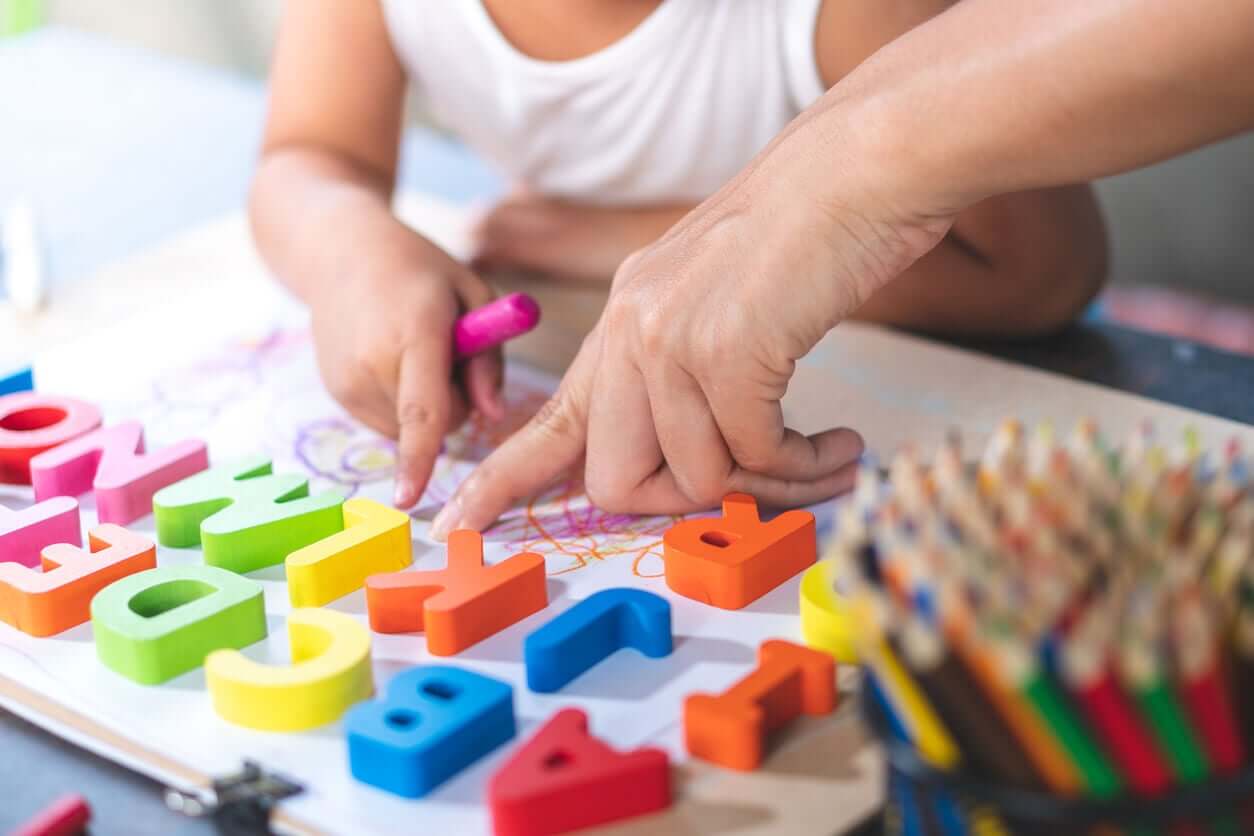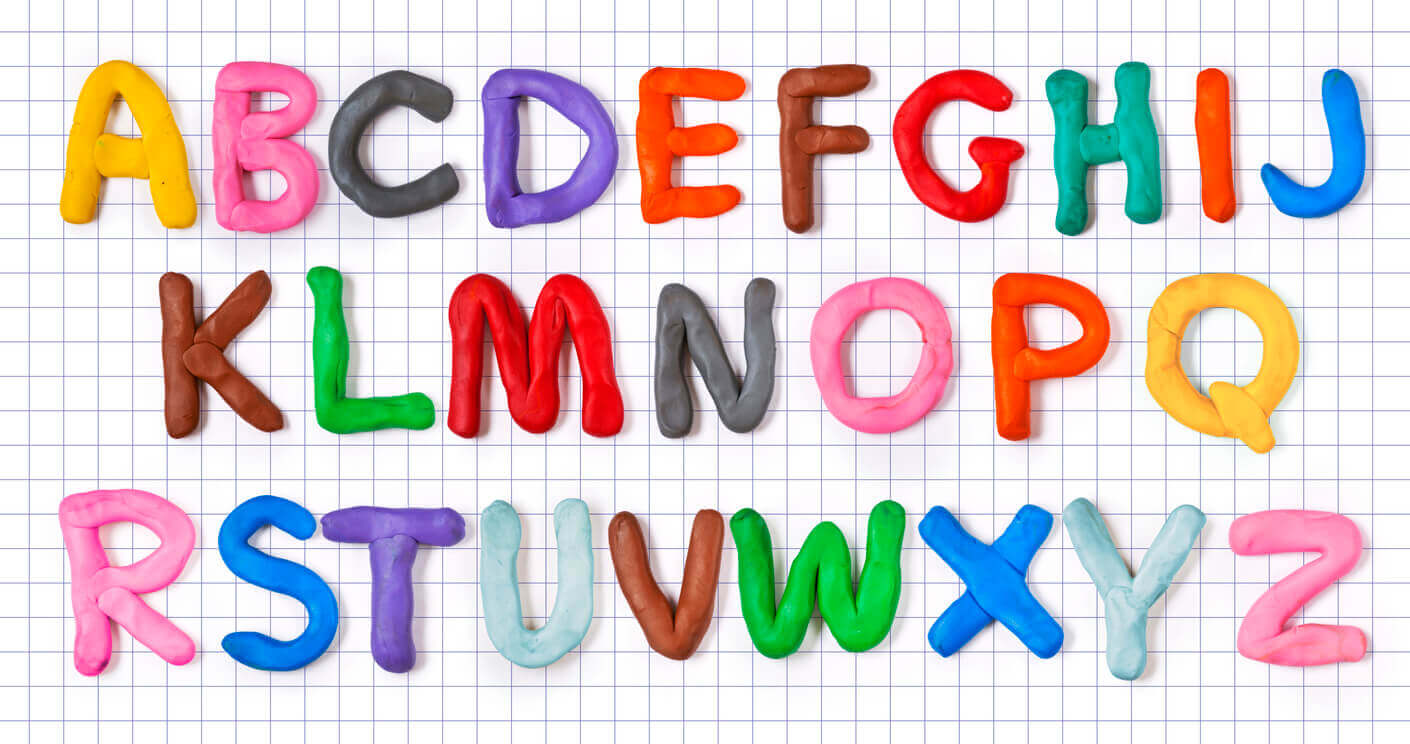Activities to Teach Your Child to Write Their Name

A child’s name is usually the first word they learn when they begin the journey toward literacy. In general, little ones love to see that they can communicate something as important as their identity. And of course, parents are also very excited to experience this milestone along with their children. But this learning goes far beyond writing, as it involves the consolidation of self-esteem and self-knowledge. For this reason, children must be allowed to show an interest in learning to write only when they’re ready to do so. With all this in mind, today we’ll tell you to help you teach your child to write their name.
Is your child ready to write their name?

Before starting, you must first stop to reflect on whether it’s time to delve into this teaching or not. This is essential in order to save you totally unnecessary moments of frustration.
What’s more, if you awaken negative emotions in your little one by forcing them to learn to write their own name, you could seriously affect their self-esteem and produce rejection or anxiety when learning any other concept.
To know if your child is ready or not, you should know them, because there’s no general rule that applies to all children. There are those who learn later than others and this doesn’t have to be a bad thing.
In general, it’s from the age of three that children begin to have certain basic fine motor skills, which allow them to take a pencil and make some strokes with it. Also, they have better developed spatial orientation and hand-eye coordination than in previous stages. All this combined helps them to execute the writing of the name.
But if you see that your child is over 3 years old and that they’re not ready yet, don’t force him and be patient. Wait for the moment when they’re really able to do it and above all, that they show interest in it. In the meantime, you can assess whether they’re able to hold a pencil or draw shapes and encourage them to spend more time with paper and colors.
Activities to teach little ones to write their own name
The activities you want to do with your child should be, first of all, short, so that they don’t get tired, and at the same time, fun, so that you can spend a pleasant time together.
You have to adapt the ideas that we’ll give you here to the child’s true capacity.
1. Write with your fingers
One activity that little ones love and that goes very well is finger writing. You can use different techniques, so choose the one that you think your child will be most interested in.
Try finger paint, sand, flour, salt, or any similar material. The idea is for the little one to imitate you, so get your hands dirty, too!
2. Playdough letters
Help your child to make letters with playdough to form their name. That way, they can better so that he can get a better grasp of their shapes. You can help them with a piece of paper with their name written in large letters so that they can then go over them with the dough.
Once finished, they can run their fingers over each letter and name them aloud. Finally, recite their entire name so that they associate all the concepts.

3. Copy their name
Copying is the oldest technique for learning to write letters, and if you make it fun, it won’t make them lazy.
It’s important that you write the name on a piece of paper in large, clear letters. Next, ask your child to copy the letters under each one. At first, you can draw a box with an arrow for them, so that they know which letter to copy inside each box.
When you see that they begin to dominate the lines, write their name again without pointing out anything and tell them to copy it underneath. You’ll be amazed at how quickly they learn to write with this ancient and effective technique!
The importance of respecting children’s timing when it comes to writing their own names
When you do an activity with your little one, it’s essential that you remember that you should never force them to do something they’re not ready to do. You must respect their learning pace and stick with it, regardless of whether they’re the fastest in their class or the slowest. Don’t force them to go faster than they really are capable of going, because all you’ll do is awaken their anxiety.
A child’s name is usually the first word they learn when they begin the journey toward literacy. In general, little ones love to see that they can communicate something as important as their identity. And of course, parents are also very excited to experience this milestone along with their children. But this learning goes far beyond writing, as it involves the consolidation of self-esteem and self-knowledge. For this reason, children must be allowed to show an interest in learning to write only when they’re ready to do so. With all this in mind, today we’ll tell you to help you teach your child to write their name.
Is your child ready to write their name?

Before starting, you must first stop to reflect on whether it’s time to delve into this teaching or not. This is essential in order to save you totally unnecessary moments of frustration.
What’s more, if you awaken negative emotions in your little one by forcing them to learn to write their own name, you could seriously affect their self-esteem and produce rejection or anxiety when learning any other concept.
To know if your child is ready or not, you should know them, because there’s no general rule that applies to all children. There are those who learn later than others and this doesn’t have to be a bad thing.
In general, it’s from the age of three that children begin to have certain basic fine motor skills, which allow them to take a pencil and make some strokes with it. Also, they have better developed spatial orientation and hand-eye coordination than in previous stages. All this combined helps them to execute the writing of the name.
But if you see that your child is over 3 years old and that they’re not ready yet, don’t force him and be patient. Wait for the moment when they’re really able to do it and above all, that they show interest in it. In the meantime, you can assess whether they’re able to hold a pencil or draw shapes and encourage them to spend more time with paper and colors.
Activities to teach little ones to write their own name
The activities you want to do with your child should be, first of all, short, so that they don’t get tired, and at the same time, fun, so that you can spend a pleasant time together.
You have to adapt the ideas that we’ll give you here to the child’s true capacity.
1. Write with your fingers
One activity that little ones love and that goes very well is finger writing. You can use different techniques, so choose the one that you think your child will be most interested in.
Try finger paint, sand, flour, salt, or any similar material. The idea is for the little one to imitate you, so get your hands dirty, too!
2. Playdough letters
Help your child to make letters with playdough to form their name. That way, they can better so that he can get a better grasp of their shapes. You can help them with a piece of paper with their name written in large letters so that they can then go over them with the dough.
Once finished, they can run their fingers over each letter and name them aloud. Finally, recite their entire name so that they associate all the concepts.

3. Copy their name
Copying is the oldest technique for learning to write letters, and if you make it fun, it won’t make them lazy.
It’s important that you write the name on a piece of paper in large, clear letters. Next, ask your child to copy the letters under each one. At first, you can draw a box with an arrow for them, so that they know which letter to copy inside each box.
When you see that they begin to dominate the lines, write their name again without pointing out anything and tell them to copy it underneath. You’ll be amazed at how quickly they learn to write with this ancient and effective technique!
The importance of respecting children’s timing when it comes to writing their own names
When you do an activity with your little one, it’s essential that you remember that you should never force them to do something they’re not ready to do. You must respect their learning pace and stick with it, regardless of whether they’re the fastest in their class or the slowest. Don’t force them to go faster than they really are capable of going, because all you’ll do is awaken their anxiety.
All cited sources were thoroughly reviewed by our team to ensure their quality, reliability, currency, and validity. The bibliography of this article was considered reliable and of academic or scientific accuracy.
- Díaz Oyarce, Carmen., Price Herrera, María Francisca. (2012) How do children perceive the process of writing in the initial stage? Revista mexicana de investigación educativa Anthrozoös, vol.38 no.1. Recuperado el 3 de septiembre de 2021 de https://www.scielo.cl/scielo.php?script=sci_arttext&pid=S0718-07052012000100013
This text is provided for informational purposes only and does not replace consultation with a professional. If in doubt, consult your specialist.








